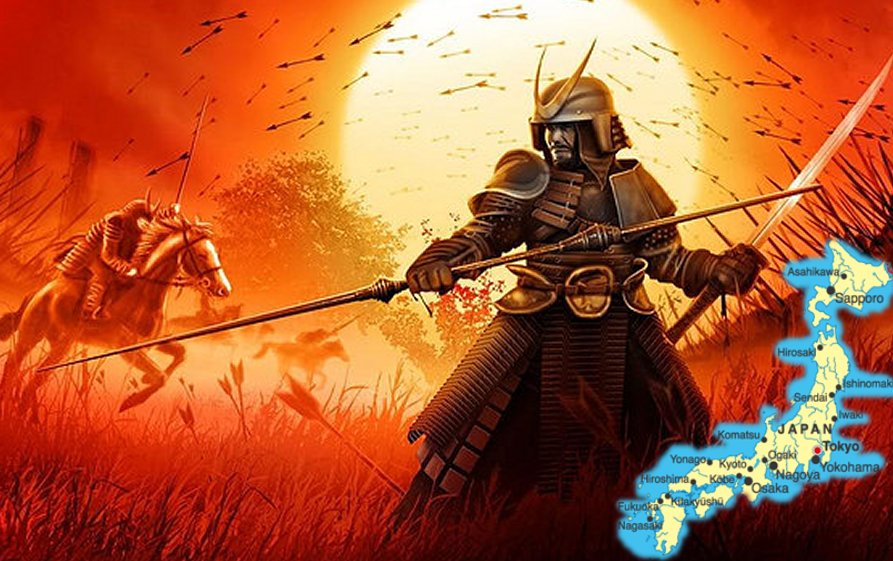The Bushido Code: Centuries-Old Unwritten Code For Ideal Samurai Warrior
A. Sutherland - AncientPages.com - Bushido, which literally means "way of the warrior," is the code of chivalry developed by the warriors in feudal Japan known as the samurai.
During the reign of the shogunates: Kamakura (1185 - 1333) and Ashikaga (1336 - 1573) various samurai clans battled for power.
From about 13th century the samurai began to follow the teachings of Zen Buddhism, Shintoism, and Confucianism and the seven most important principles of the Bushido Code became principal guidance in the warrior’s life.
A much more standardized form of the code appeared during the Tokugawa Shogunate, the last feudal Japanese military government, which existed between 1603 and 1867.
The code stressed unquestioning loyalty and obedience, valuing honor above life, and helping to be ideal warriors. The Bushido Code includes the most important principles such as courage, integrity, benevolence, respect, honesty, honor, and loyalty.
Over many centuries, it has influenced the whole of Japanese society.
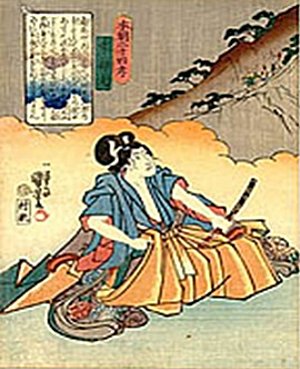 As a code of ethics, the Bushido Code can be successfully utilized and practiced in modern people’s everyday life both professionally and personally.
As a code of ethics, the Bushido Code can be successfully utilized and practiced in modern people’s everyday life both professionally and personally.
The word samurai literally means “one who serves,” and originally referred to domestic servants and later to elite military warriors who provided security and fought for the aristocratic class.
The first samurai could be considered imperial mercenaries.
To Westerners, Samurai are known to have the ability to possess many different characteristics of the bushido code, such as serving people, striving for honor, and doing one’s best in critical situations.
The sword was considered the symbol of the samurai warrior and his soul. Maintaining the bushido code in his heart and mind, was the samurai’s sole purpose in life.
With his sword, the samurai warrior fought to the death in battle to preserve the honor of his overlord or his family.
Facing imminent failure or disgrace (suffer torture), the samurai warrior was ready to commit ‘seppuku’ – ritual suicide, originally reserved for samurai. 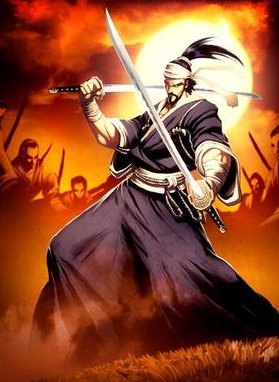
As a part of the Bushido Code, ‘seppuku’ – was performed either voluntarily by samurai, when he fell into the hands of their enemies or as a form of punishment for samurai who had committed serious offenses, or performed because they had brought shame to themselves.
If the samurai did not follow the Bushido Code, he had no right to call himself a samurai and deserve respect.
The Bushido Code has changed over the long period of its existence. Religious dominance is not as strong as in ancient times.
However, two of the most important principles of the Bushido Code are still alive: loyalty to country and family.
There are similarities between the Japanese Code of Bushido and the European Knights' Code of Chivalry, especially in values of how to treat people, but there are also several differences.
Knights of Europe protected lands of their lords for money and loyalty and honor were bought with a coin.
For Samurai, to enjoy the honor, he must earn it, according to the Bushido Code.
Written by – A. Sutherland AncientPages.com Staff Writer
Copyright © AncientPages.com All rights reserved. This material may not be published, broadcast, rewritten or redistributed in whole or part without the express written permission of AncientPages.com
Expand for referencesReferences:
T. Cleary, Code of Samurai
S. Turnbull, The Samurai
More From Ancient Pages
-
 Sacred Artifact With Mystical Powers – The Legend – Part 1
Ancient Mysteries | Apr 24, 2019
Sacred Artifact With Mystical Powers – The Legend – Part 1
Ancient Mysteries | Apr 24, 2019 -
 Enigma Of Mount Ararat – Researchers Are Determined To Reveal The Truth To The World
Featured Stories | Jun 27, 2014
Enigma Of Mount Ararat – Researchers Are Determined To Reveal The Truth To The World
Featured Stories | Jun 27, 2014 -
 Enigmatic Bronze Age Fulacht Fiadh: ‘Kitchens’ Of The Legendary Irish Warriors
Civilizations | Nov 26, 2018
Enigmatic Bronze Age Fulacht Fiadh: ‘Kitchens’ Of The Legendary Irish Warriors
Civilizations | Nov 26, 2018 -
 Kali – Hindu Goddess Of Death, Fear And Horror Who Destroys Ignorance, Evil And Establishes World Order
Featured Stories | Sep 28, 2021
Kali – Hindu Goddess Of Death, Fear And Horror Who Destroys Ignorance, Evil And Establishes World Order
Featured Stories | Sep 28, 2021 -
 Katanga Cross: Symbol Of Secrets, Power And Valuable Currency Of The Congolese People
Ancient Symbols | Sep 10, 2018
Katanga Cross: Symbol Of Secrets, Power And Valuable Currency Of The Congolese People
Ancient Symbols | Sep 10, 2018 -
 Surprising Inscription Discovered On Birka Ring – Ancient Viking Artifact
Archaeology | May 13, 2015
Surprising Inscription Discovered On Birka Ring – Ancient Viking Artifact
Archaeology | May 13, 2015 -
 Still Intact Renaissance Shipwreck Discovered On The Baltic Seabed
Archaeology | Jul 24, 2019
Still Intact Renaissance Shipwreck Discovered On The Baltic Seabed
Archaeology | Jul 24, 2019 -
 Were The Bones Of Fallen Battle of Waterloo Soldiers Sold As Fertilizer? – New Study
Archaeology | Jun 18, 2022
Were The Bones Of Fallen Battle of Waterloo Soldiers Sold As Fertilizer? – New Study
Archaeology | Jun 18, 2022 -
 8,000 Year-Old Human Skeleton Discovered By Cave Divers Near Tulum, Mexico
Archaeology | Sep 15, 2022
8,000 Year-Old Human Skeleton Discovered By Cave Divers Near Tulum, Mexico
Archaeology | Sep 15, 2022 -
 Wolstenholme Towne: Lost Virginia Settlement – Destroyed, Abandoned And Forgotten
Featured Stories | Jun 26, 2018
Wolstenholme Towne: Lost Virginia Settlement – Destroyed, Abandoned And Forgotten
Featured Stories | Jun 26, 2018 -
 City Of Patara: Long History Of Wars And Visits Of Prominent Figures Of Ancient World
Archaeology | Jul 9, 2020
City Of Patara: Long History Of Wars And Visits Of Prominent Figures Of Ancient World
Archaeology | Jul 9, 2020 -
 New Paintings And Details Uncovered In The Egyptian Temple Of Esna
Places | Oct 22, 2024
New Paintings And Details Uncovered In The Egyptian Temple Of Esna
Places | Oct 22, 2024 -
 Major Puzzle In Mammal Skull Shape Evolution Solved
Evolution | Dec 20, 2023
Major Puzzle In Mammal Skull Shape Evolution Solved
Evolution | Dec 20, 2023 -
 First Discovery Of A 127-Million-Year-Old Side-Necked Turtle Fossil In UK
Fossils | Jun 13, 2023
First Discovery Of A 127-Million-Year-Old Side-Necked Turtle Fossil In UK
Fossils | Jun 13, 2023 -
 Sacred Artifact With Mystical Powers – The Discovery – Part 2
Ancient Mysteries | Apr 26, 2019
Sacred Artifact With Mystical Powers – The Discovery – Part 2
Ancient Mysteries | Apr 26, 2019 -
 Louvre Museum’s Entire Collection Is Now Available Online To Anyone
News | Mar 31, 2021
Louvre Museum’s Entire Collection Is Now Available Online To Anyone
News | Mar 31, 2021 -
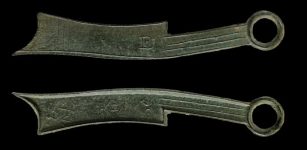 Scientists Decipher 2,300-Year-Old Chemistry Formulas Revealing Ancient Metallurgy Was More Complex Than Previosuly Thought
Ancient Technology | Aug 10, 2022
Scientists Decipher 2,300-Year-Old Chemistry Formulas Revealing Ancient Metallurgy Was More Complex Than Previosuly Thought
Ancient Technology | Aug 10, 2022 -
 Roman Tombs Unearthed In Egypt’s Dakhla Oasis
Archaeology | Jan 28, 2019
Roman Tombs Unearthed In Egypt’s Dakhla Oasis
Archaeology | Jan 28, 2019 -
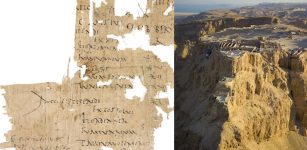 Rare Ancient Paycheck Of A Roman Legionary Soldier Found At Masada
Archaeology | Feb 16, 2023
Rare Ancient Paycheck Of A Roman Legionary Soldier Found At Masada
Archaeology | Feb 16, 2023 -
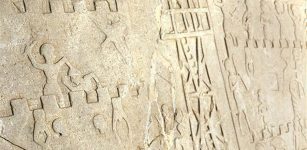 Harput Relief: 4,000-Year-Old Artifact Pushes Back History Of Region By 1,000 Years
Archaeology | Mar 23, 2017
Harput Relief: 4,000-Year-Old Artifact Pushes Back History Of Region By 1,000 Years
Archaeology | Mar 23, 2017

